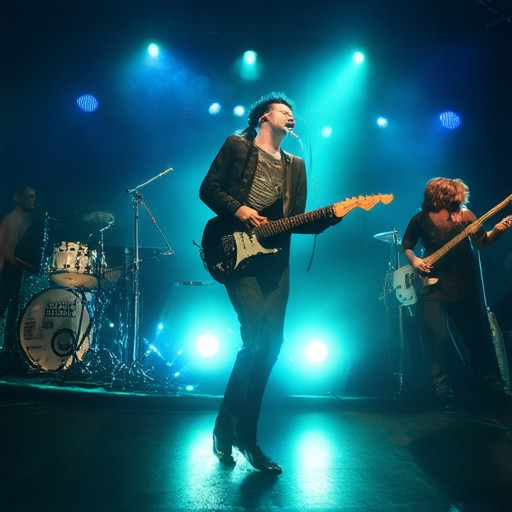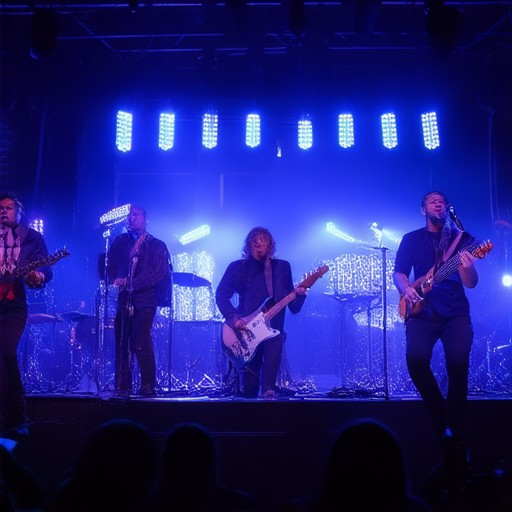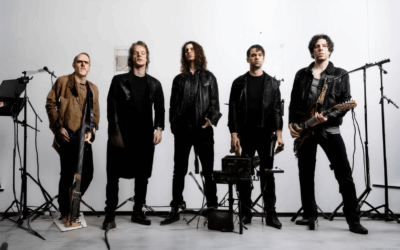Securing music sponsorships for your band can be a game-changer, offering valuable resources, exposure, and financial support to help your career thrive. Whether you’re an independent artist or a rising band, finding the right sponsors requires a strategic approach. This guide explores proven methods to secure music sponsorships, understand what companies offer, and how to negotiate favorable terms. From leveraging social media and local businesses to approaching companies directly, we’ll cover everything you need to know to secure sponsorships and grow your musical endeavors. By aligning your goals with potential partners, you can build lasting relationships that benefit both your band and the sponsoring brand. Let’s dive into the essential strategies and insights to help you hunt for sponsors effectively.
Key Takeaways
- Define your unique value proposition to attract sponsors by clearly articulating your artistic vision and how it aligns with potential sponsors’ goals.
- Identify potential sponsors by targeting companies that align with your artistic style, such as those in fashion, tech, beverages, or financial services.
- Craft a compelling sponsorship proposal by presenting a visionary concept and outlining clear funding requests, timelines, and deliverables.
- Leverage your network to connect with potential sponsors through personal referrals and direct outreach to decision-makers.
- Understand different sponsorship models, including commission-based, project-based, and in-kind support, to find the best fit for your needs.
- Negotiate terms carefully to establish clear payment structures, durations, and expectations while preserving creative control.
- Deliver results consistently to build trust and foster long-term partnerships with sponsors.
- Know the companies that sponsor artists, such as major brands like Gucci, Uber, Verizon, and Adobe, as well as mid-sized brands like Red Bull and Toyota.
- Highlight the benefits of sponsorship for companies, including brand awareness, cultural engagement, innovation, and social responsibility.
- Understand sponsorship costs for concerts, with prices ranging from $5,000 to over $500,000 depending on event size, tiered packages, and promoter fees.

How to Find Sponsors for Your Band
Securing sponsorships for your band requires a combination of creativity, persistence, and strategic outreach. Here’s a step-by-step guide to help you find sponsors:
- Define Your Needs
- Determine the type of sponsorship you’re seeking (e.g., financial support, equipment, or promotional opportunities).
- Identify the industries or companies that align with your band’s style and values.
- Research Potential Sponsors
- Look for local businesses, music retailers, or event organizers who may be interested in sponsoring live performances.
- Consider reaching out to brands that sell music-related products or services (e.g., guitar strings, amps, or apparel).
- Explore corporate sponsors who may be interested in associating with your band for marketing purposes.
- Network with Industry Professionals
- Attend music festivals, showcases, and networking events to meet potential sponsors face-to-face.
- Join online communities and forums dedicated to music producers, labels, and industry insiders.
- Use platforms like LinkedIn to connect with professionals in the music and marketing sectors.
- Promote Your Brand
- Create a professional website and showcase your music, achievements, and unique selling points.
- Share your story and passion for music through social media platforms to attract sponsors who resonate with your vision.
- Develop a strong online presence with high-quality photos, videos, and bio information.
- Approach Sponsors Directly
- Reach out to businesses and brands you believe would benefit from sponsoring your band.
- Tailor your pitch to highlight how their sponsorship will align with their goals and brand image.
- Offer incentives or exclusive perks for early commitments, such as logo placement or featured performances.
- Utilize Crowdfunding and Pre-Sales
- Launch a crowdfunding campaign to raise funds for your project or tour, offering rewards for contributors.
- Sell exclusive merchandise or tickets to your shows to generate additional revenue and interest.
- Build Relationships
- Maintain regular communication with sponsors to ensure they see the value of their investment.
- Provide updates and testimonials to strengthen your relationship and increase future sponsorship opportunities.
- Track and Measure Success
- Keep records of your sponsorship efforts, including who you contacted, how you pitched them, and their response.
- Analyze the impact of your sponsorship deals on your band’s growth and visibility.
By following these steps, you can effectively identify and secure sponsorships that align with your band’s goals and contribute to your long-term success in the music industry.
How to Ask a Company to Sponsor You
To effectively ask a company to sponsor you, follow these organized steps:
- Understand Your Audience and Industry
- Identify your target audience and their preferences.
- Research companies within your niche or industry.
- Investigate different sponsorship tiers (e.g., Platinum, Gold, Silver).
- Understand the benefits each tier offers, such as branding, exposure, or event access.
- Include a brief overview of your background and achievements.
- Outline your short-term and long-term goals.
- Explain how the sponsorship aligns with the company’s values and objectives.
- Add visuals like a pitch deck or infographics to enhance your proposal.
- Start with an introduction email, attaching your proposal.
- Be prepared for phone calls or meetings to discuss opportunities.
- Know your worth based on market rates and your influence.
- Request detailed sponsorship packages and negotiate terms.
- Seek legal advice to ensure the contract is favorable and clear.
- Ensure consistent communication and performance post-signing.
- Measure the success of the sponsorship through ROI metrics.
- Promote the sponsor’s involvement extensively.
- Be open to constructive criticism and use it to refine future proposals.
- Build lasting relationships for potential future collaborations.

What Does a Sponsor Do for a Band?
A sponsor plays a vital role in supporting a band by providing financial and promotional assistance, enabling the band to thrive creatively and operationally. Here’s a breakdown of the key responsibilities and benefits:
- Financial Support: Sponsors fund the band’s activities, covering costs such as instrument purchases, travel expenses, and production fees. This financial backing allows the band to focus on their music and performances.
- Promotion and Branding: Sponsors often help increase the band’s visibility through marketing efforts, logo placements on merchandise, concert posters, and social media campaigns. This exposure can significantly boost fan engagement and recognition.
- Sponsors may connect the band with industry professionals, promoters, and venues, opening doors to potential tour dates, collaborations, and career advancement opportunities.
- Community Engagement: Sponsors sometimes align with the band’s mission, allowing them to participate in community events or educational programs that strengthen the band’s connection with its audience and local supporters.
By partnering with a sponsor, bands gain valuable resources and support that help sustain their operations and amplify their impact on the music scene.

How Do Artists Get Sponsors?
Artists seeking sponsorship can approach the process systematically to increase their chances of success. Here’s a step-by-step guide to help you secure sponsorships:
- Define Your Value Proposition : Clearly articulate why your art or music matters. What makes your work unique? Who would benefit from sponsoring you? Tailor this message to align with potential sponsors’ goals.
- Identify Potential Sponsors : Look for companies or organizations that align with your artistic vision. Consider industries like fashion, tech, beverages, or financial services that often partner with creatives.
- Craft a Compelling Proposal :
- Creative Concept : Present a visionary idea that ties your work to their brand. Show how your collaboration can enhance their image or achieve their objectives.
- Funding Request : Outline your financial needs, whether it’s for materials, travel, or marketing. Be specific and justified.
- Timeline and deliverables : Provide a clear schedule and milestones to show accountability.
- Network and Outreach :
- Leverage Connections : Use your existing network to introduce yourself to potential sponsors. Personal referrals carry weight.
- Direct Outreach : Email or pitch your proposal directly to decision-makers at companies. Include supporting materials like your portfolio or past work.
- Understand Sponsorship Models :
- Commission-Based : Some sponsors pay based on sales or exposure generated by their sponsorship.
- Project-Based : Others fund specific projects or events.
- In-Kind Support : Some provide resources or services instead of cash.
- Negotiate Terms :
- Discuss payment terms, duration, and expectations clearly.
- Preserve creative control while ensuring the sponsor’s involvement aligns with your vision.
- Deliver Results : Regularly update sponsors on progress and outcomes to build trust and encourage future collaborations.
By following these steps, you can effectively navigate the sponsorship landscape and build meaningful partnerships that support your artistic endeavors. Remember, persistence and tailored approaches are key to securing sponsorships. Learn more about our resources .
What Companies Sponsor Artists?
Many corporations and brands sponsor artists to foster creativity, innovation, and cultural engagement. These sponsorships often take the form of financial support, product placements, or collaborative opportunities. Below are some prominent companies that actively sponsor artists:
Major Corporate Sponsors
- Gucci – Known for its high-fashion sponsorships, Gucci supports various artists through collaborations and events.
- Uber – Partnering with musicians and artists to enhance urban experiences and promote cultural initiatives.
- Verizon – Sponsors music festivals and individual artists to connect with younger audiences.
- Anheuser-Busch InBev – A major sponsor of large-scale music events and artist development programs.
- Adobe – Provides creative software and resources to artists and designers through grants and partnerships.
- Patron + Artist – A platform connecting patrons with artists to support creative projects directly.
Mid-Sized Brands and Creative Partnerships
Several smaller brands also contribute significantly to the arts community:
- Red Bull – Supports artists through its Red Bull Music Academy and event sponsorships.
- Toyota – Sponsors art installations and collaborates with artists on innovative projects.
- HP – Backs digital artists and creative professionals with technology and resources.
- Target – Collaborates with artists to create unique collections and support creative communities.
- Ben & Jerry’s – Funds public art projects and supports local artists through initiatives like “Pint for a Purpose.”
Benefits of Corporate Sponsorship
Companies sponsor artists for several reasons, including:
- Brand Awareness – Aligning with artistic talent enhances brand visibility.
- Cultural Engagement – Building connections with diverse audiences through shared interests in art and culture.
- Innovation – Gaining access to fresh perspectives and creative solutions from artists.
- Social Responsibility – Contributing to the growth and development of emerging talent.
For more information on how companies support artists, explore our artist resources and discover the latest trends in artistic sponsorships.

Sponsorship Costs for Concerts
Sponsorship payments for concerts can vary significantly depending on several factors:
- Event Size and Popularity: Smaller local events may charge $5,000 to $15,000 per sponsor, while major international tours can command $100,000+ per venue.
- Pricing Models: Sponsors often pay 10-30% of the event’s total revenue, reflecting their expected ROI through exposure and audience engagement.
- Sponsorship Tiers: Packages range from basic to premium, with platinum, gold, silver, and bronze tiers offering varying levels of branding and access.
- Promoter Fees: Promoters typically take a 15-25% cut, meaning sponsors’ payments are adjusted accordingly after these deductions.
For instance, a medium-sized festival might charge $50,000 to $200,000 per sponsor, while a headlining artist tour could fetch $500,000+ per sponsor at major venues.
These figures are estimates and can fluctuate based on negotiations, market demand, and the specific terms agreed upon between sponsors and promoters.



0 Comments